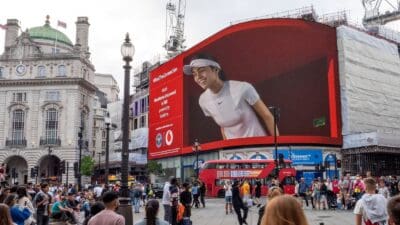The only function of economic forecasting is to make astrology look respectable, veteran economist JK Galbraith once memorably remarked.
Galbraith’s words seem particularly apposite right now, with mainstream economic thinking predicting a long, slow economic recovery. As with 2009, letters of the alphabet are much in vogue: a ‘U’-shaped recovery, a ‘W’-shaped recovery, and so on.
I’m not so sure. As far as the UK goes, I think that the odds of a ‘V’-shaped recovery – as in 2009 – are pretty good.
And for investors, the implications are obvious. The FTSE 100 is already up 20% on March’s lows. As the recovery gathers pace, and more sectors of the economy return to something like normal, returning economic confidence should drive share prices even higher.
Enforced saving
I don’t have a crystal ball, to be sure. Nor do I have an econometric model on which to run complex simulations. But I do have something else: an eye for some interesting data points in the real economy.
And the narrative that those data points are suggesting is one of more buoyant consumer confidence than the gloomy headlines suggest.
Yes, people are losing their jobs. Yes, certain sectors of the economy – and the workforce – are suffering from lockdown: anything to do with aviation, for instance, is having a torrid time of it, and is likely to continue doing so for some time.
But lots of people haven’t lost their jobs, and their incomes haven’t suffered during the lockdown. On the contrary, their actual disposable incomes will have actually risen, as many of them haven’t been incurring the costs of travelling to work, and with shops shut, there haven’t been so many opportunities to spend money.
The statistics might not show it yet, but the savings ratio will have been rocketing upwards – partly propelled by such enforced saving, and partly by the government’s various stimulus packages.
Household deleveraging
According to the Bank of England’s monthly money and credit statistical release, households and many businesses have been pumping money into their bank accounts during the lockdown.
Deposits in banks and building societies rose by £52bn in May, following an increase of £37.3 billion in April, and £67.3 billion in March. Households repaid £7.4 billion of consumer credit, net, during April – apparently the largest net repayment since the Bank began collecting such data. May’s net repayment figure wasn’t quite as high, at £4.6bn, but was still a decent wedge.
That’s not a sign of economically distressed consumers, in my view. Neither were the long queues reported at stores like IKEA when they reopened in mid-June, with eager shoppers happily queuing for hours.
And within hours of the news last week that holiday accommodation could reopen from 4 July, hordes of consumers were planning holidays and making bookings – another sign of consumer confidence. For me, the contrast with the 2008–2009 recession couldn’t have been more stark: back then, the talk was of ‘staycations’, with many people interpreting that as ‘stay at home’, rather than ‘stay in the UK’.
For another data point, in mid-June I ordered a new computer, built for me by a specialist company in the UK. The delivery date? The last few days in July: until then, their manufacturing slots are booked. There has, apparently, been “a large influx of orders” during the lockdown.
And 4 July, when pubs and restaurants re-open, will provide yet another interesting data point, of course
Passive income stocks: our picks
Do you like the idea of dividend income?
The prospect of investing in a company just once, then sitting back and watching as it potentially pays a dividend out over and over?
If you’re excited by the thought of regular passive income payments, as well as the potential for significant growth on your initial investment…
Then we think you’ll want to see this report inside Motley Fool Share Advisor — ‘5 Essential Stocks For Passive Income Seekers’.
What’s more, today we’re giving away one of these stock picks, absolutely free!
Rational exuberance
Now, I may be wrong. And – like you – I’m reading about businesses laying people off, especially retail and travel businesses. Even in defensive sectors such as food retail, Covid-19 is adding to costs, and making life difficult.
Who knows? Britain may yet sink into a slump, as opposed to experiencing a sharp decline and rapid bounce-back — a technical recession, to be sure, but not a ‘real’ recession such as 2008–2009.
Yet to me, things so far don’t feel like a ‘real’ recession. And plenty of consumers – who collectively drive around two-thirds of the UK’s GDP – aren’t acting as though they were experiencing a ‘real’ recession.
Time will tell. But personally, I’m increasingly discounting talk of a ‘U’-shaped or ‘W’-shaped recovery. In my book, the likelihood of a ‘V’-shaped recovery has risen substantially.







